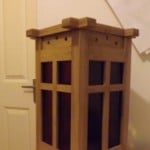File Sharpening Saws
Welcome! / Forums / General Woodworking Discussions / Tools and Tool Maintenance/Restoration / File Sharpening Saws
- This topic has 42 replies, 11 voices, and was last updated 5 years, 7 months ago by
 Mark68.
Mark68.
-
AuthorPosts
-

On page 292 of Paul’s book (Essential Woodworking Hand Tools) Paul talks about how to change the pitch of the teeth of a saw to make it more or less aggressive in its cut.
For example “If the front pitch of the tooth is steep, that is, near to vertical, then the teeth will cut aggressively – often too aggressively. By altering this to a lesser pitch, we create a less aggressive saw cut.”
Also “We can lessen the pitch much more than this…”
I don’t understand. I realise we can sharpen the saw’s teeth with a saw file, but those teeth are pretty hard I’d have thought. So how can we actually change the pitch of the teeth?
I should add I’m talking about rip cut saws in case that makes a difference.
-
This topic was modified 7 years, 3 months ago by
 Mark68.
Mark68.
-
This topic was modified 7 years, 3 months ago by
 Mark68.
Mark68.
-
This topic was modified 7 years, 3 months ago by
 Mark68.
Mark68.
15 January 2017 at 6:35 pm #211951We do it the same way, that we sharpen the teeth: remove material with a file.
You should watch the video about cutting new teeth into a worn out sawblade.
Dieter
 15 January 2017 at 7:06 pm #212843
15 January 2017 at 7:06 pm #212843It is hard to see but the file rotates. At the front the file is flat across the top then as you go back the file rotates which when you cut the tooth the point of the tooth points more to the front.
This makes the tooth grab harder. And is where you get the pitch difference 15 January 2017 at 11:21 pm #219213
15 January 2017 at 11:21 pm #219213the file has 6 sides.. 3 large faces and 3 small faces at the corners =6
with the file in the gullet of the saw and you are looking down you should have one of the large faces horizontal and facing the sky with 2 small faces pointing left and right if you file like this is a negative rake OR (a less aggressive rake). you should file the first inch or so of teeth like this .now rotate the file slightly to the left the large face you were looking at for the first inch is now sloping to the left . the face on the right of the file should be vertical or 90 degrees. this increases the pith dramatically and gives an aggressive rake file the rest of the saw moving towards the handle like this .hope this helps
david16 January 2017 at 3:19 am #224114When You watch the video concentrate on the top of the file. Watch how it goes from flat on top to having one of the points on top.
The file rotates as you move to the back.
 16 January 2017 at 3:19 pm #265184
16 January 2017 at 3:19 pm #265184Yep, you can actually change the shape of the teeth with a saw file. Very easily, in fact.

[quote quote=265184]Yep, you can actually change the shape of the teeth with a saw file. Very easily, in fact.
[/quote]
[quote quote=265184]Yep, you can actually change the shape of the teeth with a saw file. Very easily, in fact.
[/quote]
That’s the part that was throwing me, I never knew you couldThanks all

I didn’t want to start another thread and clog things up.
I recently bought two Spear & Jackson saws, 26″. One for rip, the other for cross cutting. One of them has a bit of a rattle in the handle. I informed the supplier and they sent me a replacement, no questions asked. I used that the other day – and now the handle is rattling :/
I haven’t even tried the other saw I bought, but I’m not hopeful given my experience with the other two saws.
Trouble is, the saws are riveted so I’m not sure how to fix the rattling or even if it can be done.
Any advice?

Hello Mark,
the cheapest way is to “tighten” the rivets: put one rivet after the other between the jaws of a (the bigger the better) metal vice an put pressure on.
That worked for me.Edit: Of course to put the head of the rivet on an anvil and a whack with a hammer will do it as well.
E.
16 August 2018 at 11:06 pm #550299Mark, elsewhere PS recommends solving this specific issue by clamping a hammer face-up in the vice, as an anvil. Place the rivet on the hammer face and tap the other end of the rivet with a second hammer. Note “tap” not “whack” 😉
 17 August 2018 at 1:27 am #550303
17 August 2018 at 1:27 am #550303You’re skipping a couple. The sequence is supposed to go bump, tap, knock, wack, wallop, pound and bash. Be careful with bash – that one can make a mess!
-
This topic was modified 7 years, 3 months ago by
-
AuthorPosts
- You must be logged in to reply to this topic.
